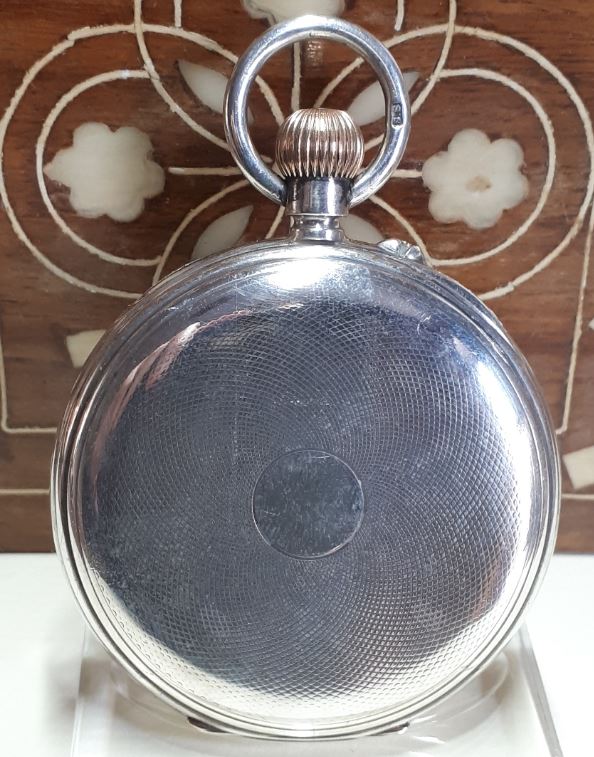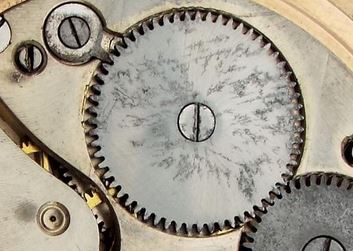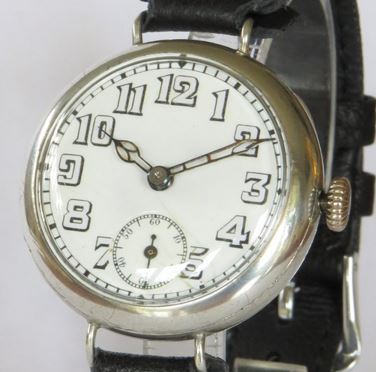Last updated on June 25, 2024
Antique watches are becoming more and more popular with collectors worldwide. In earlier days, it was often considered desirable for antique watches to be restored and polished to look “like new”. However, in more recent times we see more antique watches for sale that show dings, fading and scratches. It is a sign that the majority of collectors have started preferring originality over restoration. An original antique watch that has been used throughout its life will have a patina.
What is patina?
Patina describes the changes in the visual state of a watch’s appearance as it ages. The ageing of a watch is mainly influenced by light, moisture, use, and material. The more a watch is worn and the greater the exposure to the elements the faster the watch will age. The patina is an expression of character and tells a unique story about every antique watch. It shows that it has been used as the tool that it is and not just sat in a bank vault for a century or more.
The colour of the dial and bezel may have changed since the watch left the factory floor. White dials can often acquire a creamy colour. Black dials may have turned brownish, which is a sought-after effect referred to as “tropical dials“. The patina is distinctive on each antique watch. Because each watch will age differently, no two will ever have exactly the same patina.
Patina or damage?
In regards to antique watches, the term patina applies to the dial, the bezel, the hands, and the case. Fading and discolouring due to age are what we consider patina. Likewise, light scratches or minor dents on the case and hairline cracks on the dial are also considered patina. Any antique watch that has been actively used will show patina. Repaired dials or non-original hands will also fall into the damaged category.
The crystal lens may have also been replaced. If the watch has an acrylic lens, it will not be the original for a genuine antique watch. The process for creating acrylic lenses wasn’t invented until around 1928. Visibly, there is no difference between the two. Mineral crystal is more scratch-resistant, but more likely to shatter or chip. Acrylic crystals are generally more durable, which is why they are used as replacements. Generally, a watch with the original mineral crystal lens will be considered more original and therefore slightly more valuable. Personally, I have both types of crystal in my collection and it doesn’t really factor into my purchasing decision.
The movement is considered separately because it is secured in the case and is more likely to be preserved close to its original condition. In fact, a movement that is badly marked, oxidised or otherwise corroded is generally a bad sign for the entire watch. This is because such markings are a sign of damage rather than patina. It generally, indicates water damage, which is never a good thing for an antique watch. Overall, patina tends to add value to an antique watch and damage detracts.
Environmental factors
There are several environmental factors that can contribute to patina. Temperature, exposure to sunlight and daily use are the main elements. Moisture is another, but the effect of water is going to be considered damage rather than patina. Any time water penetrates the case it is going to be extremely detrimental to the movement, causing corrosion throughout the components. Avoid antique watches with water damage.
Moisture in the form of humidity can also affect the dial. Humidity can collect and form tiny pools of water that can dry up and create uneven stains and spots on the dial. Again, such damage on the dial would indicate that the humidity is also likely to have penetrated the movement.
Pitting corrosion affects metals and alloys such as steel and brass. It is usually constrained to specific areas of the movement. It penetrates and attacks rapidly and can be difficult to detect. Normally, it is caused by a corrosive solution containing chlorides, such as seawater. Any sign of pitting on the watch movement should be considered damage and not patination.
Dials
Originally, watch dials were made of metal. However, when vitreous enamel became available during the eighteenth century, it quickly became the preferred material for watch dials. Vitreous enamel is smooth, hard and resistant to chemical stains. Additionally, it is scratch-resistant (5–6 on the Mohs scale) and has long-lasting colour fastness. As enamel is glass, not paint, it does not fade when exposed to bright light. However, one disadvantage of enamel is a tendency to crack or shatter when the underlying metal is stressed or bent. This can result in hairline cracks on the dial.
Hairline cracks, in my opinion, are examples of patination. At some point, the underlying metal plate has been placed under stress, during use, and caused the hairline crack to appear. Dials can also discolour due to exposure to water, corrosion or lubricants. Stains are very different to patina and definitely fall into the damage category. Likewise, signs of repair are not patination, it is clearly a case of damage to the watch. Hairline cracks, which tend to become more visible when dirt accumulates, can often be enhanced by thoroughly cleaning the enamel dial.
Luminous paint
Luminous paint was applied to military pocket watches from the early 1900s. Initially, luminescence was achieved by using radium, which was discovered by Marie Curie and her husband, Pierre Curie in 1898. Radium was eventually combined with zinc sulphide phosphor, allowing a brighter shine than just pure radium. This was applied in the form of paint to the markers and the hands. The zinc sulphide phosphor wore out after a couple of years and the paint would need to be reapplied.
Eventually, the ill effects of radioactive paint became well known and the paint was removed from many watches. Antique watches with intact luminous paint are rare. However, those watches that have had the paint removed are still considered original. Any traces of luminous paint on the dial will have acquired a dark orange-brown shade by now. Radium has a half-life of 1600 years, so the tiny traces of paint remain radioactive.
Value
In recent years, auction houses have been seeing higher bids for antique watches with a genuine patina. This has led to faking patina on antique watches in recent years, this is another reason why you should only purchase from trusted dealers.
A list of additional posts regarding antique watches can be found on the Guides page.



